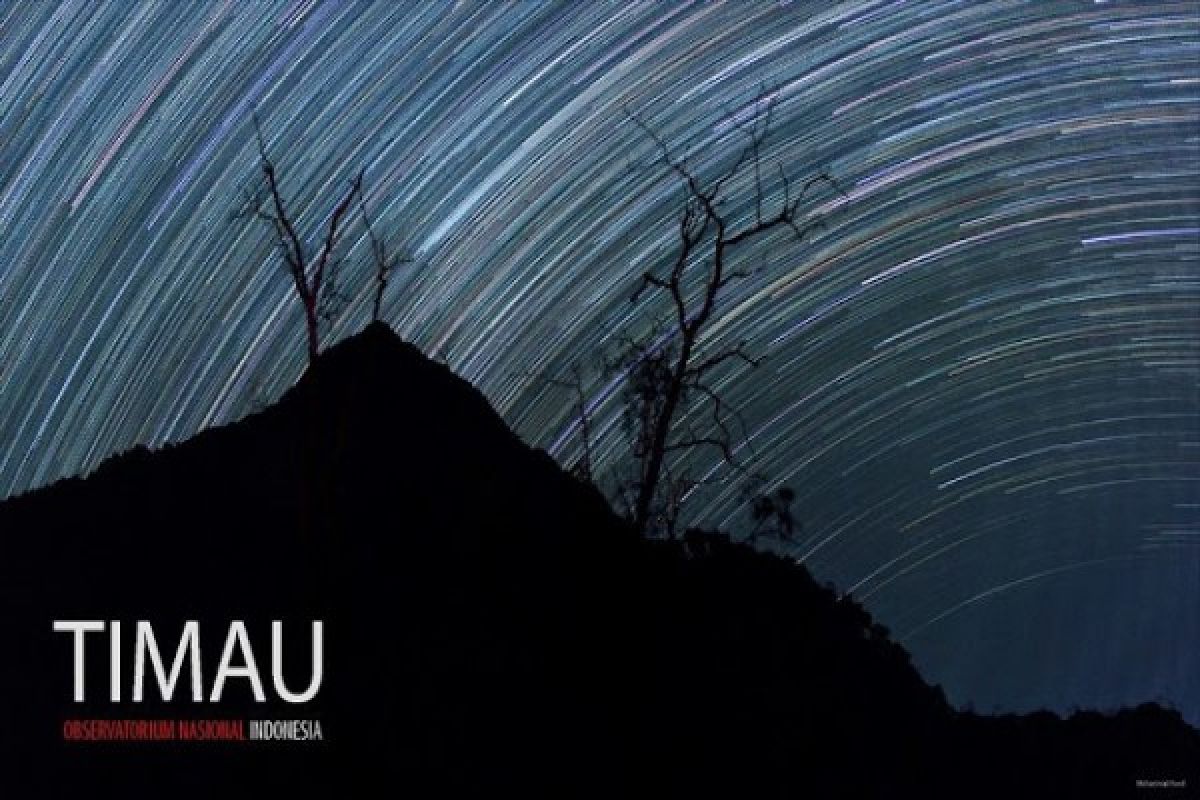The country`s Institute of Aeronautics and Space (Lapan) is building an observatory to be equipped with a telescope, believed to be the largest in Southeast Asia, in the Mount Timau area, Central Amfoang Sub-district, Kupang District, East Nusa Tenggara Province.
The construction of the observatory, expected to cost some Rp400 billion, began on July 9, Jasyanto, spokesman of Lapan, noted recently.
"Indonesia is entering a new chapter in aeronautics to be marked by construction of the largest national observatory facility in Southeast Asia, to be located in Timau mountainous area," he said.
Research, Technology and Higher Education Minister Prof Mohamad Nasir officially designated Mt Timau area as a national observatory site and as a national dark sky park. He has also officially named the facility as Timau Observatory.
LAPAN builds the observatory with the cooperation of the Bandung Institute of Technology (ITB), the University of Nusa Cendana (Undana) in Kupang, and the Kupang district administration.
The observatory will be equipped with a telescope having a diameter of 3.8 meters, believed to be the largest and modern telescope in the Southeast Asian region.
Having the latest and efficient technology, the telescope will be used for astrophysical research related to star observations, nebulae and galaxy structures. The large telescope is currently being manufactured in Japan.
Located some 200 km east of Kupang city, the construction of Timau Observatory is expected to be completed in 2019.
The Timau mountainous area is considered to be a suitable site for building an observatory since it is located near the equator and can be used to observe the northern and southern hemispheres. The mountainous area is free from air pollution, and its tropical climate is ideal for making astronomical observations.
In fact, East Nusa Tenggara, in general, has bright skies in the evening for extended periods of time, as it experiences a prolonged dry season or drought.
The Timau observatory will be located in a nature sanctuary area that is far from residential areas.
For decades, Timau has been able to preserve its dark skies that are suitable for making astronomical observations.
"Dark skies must always be preserved and prevented from being affected by air pollution for optimal astronomical observations," Lapan Head Thomas Djamaludin remarked.
Djamaludin was in Kupang on July 9 to inaugurate the building of an operational office to support the Timau observatory.
The operational office will also serve as a center for education in aeronautics for the public.
In addition to serving scientific and public education purposes, the observatory facility is expected to attract tourists to Amfoang, Kupang District.
Timau could be specifically designated as a tourist destination for its dark skies.
Indonesia, with its long history of astronomical research since 1923, has several observatories including the famous Bosscha Observatory, Tanjungsari Observatory located in Sumedang, West Java; Watukosek Observatory in Surabaya, East Java Province; and Taman Ismail Marzuki (TIM) Planetorium and Observatory in Jakarta.
Bosscha Observatory is still the largest in Indonesia and the only one used for astronomical purposes. In fact, the observatory is the oldest modern observatory in Indonesia and one of the oldest in Asia.
The observatory is located in Lembang, West Java, approximately 15 kilometers north of Bandung. It is situated on a hilly six-hectare plot of land and is 1,310 meters above the mean sea level plateau.
Construction of the observatory began in 1923 and was completed in 1928. Since then, continuous observations of the skies have been made. The first international publication from Bosscha was released in 1922.
In 1959, the observatory`s operations were handed over to the Bandung Institute of Technology and has been an integral part of research and formal education of astronomy in Indonesia.
Five large telescopes were installed in Bosscha: the Zeiss double refractor, the Schmidt telescope or nicknamed: Bima Sakti telescope, the Bamberg refractor, the Cassegrain GOTO, and the Unitron refractor.
Meanwhile, the TIM Planetarium and Observatory, located in central Jakarta, has been considered an impressive and popular site for children to learn about space and the Universe, in general, through science.
The public can witness and be enthralled by the astronomical simulation of the universe, the stars, and planets at the TIM Planetarium and Observatory, which was constructed in 1964 and personally inaugurated by Indonesia`s first president, Soekarno.
Reporter: Fardah Assegaf
Editor: Andi Abdussalam
Copyright © ANTARA 2018












